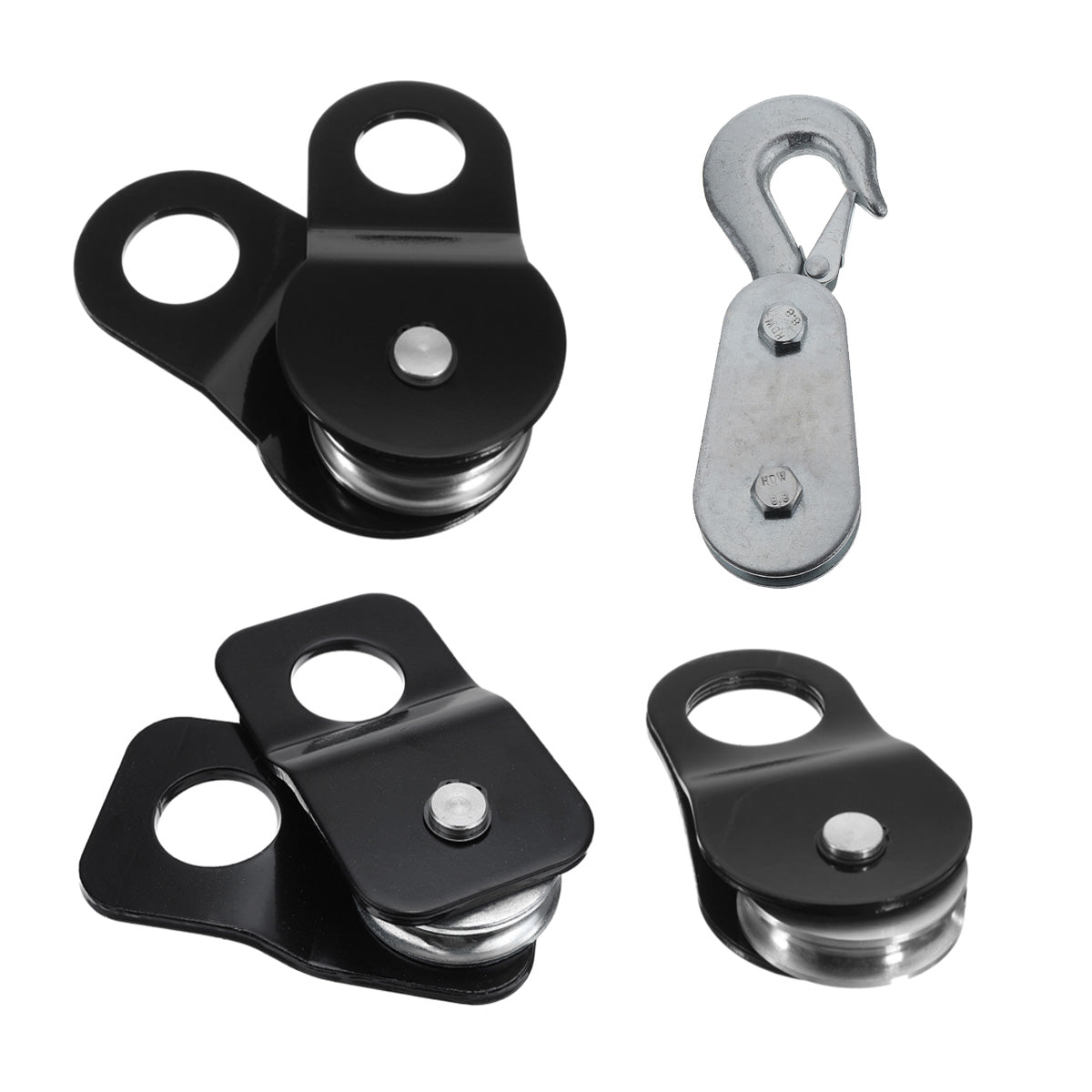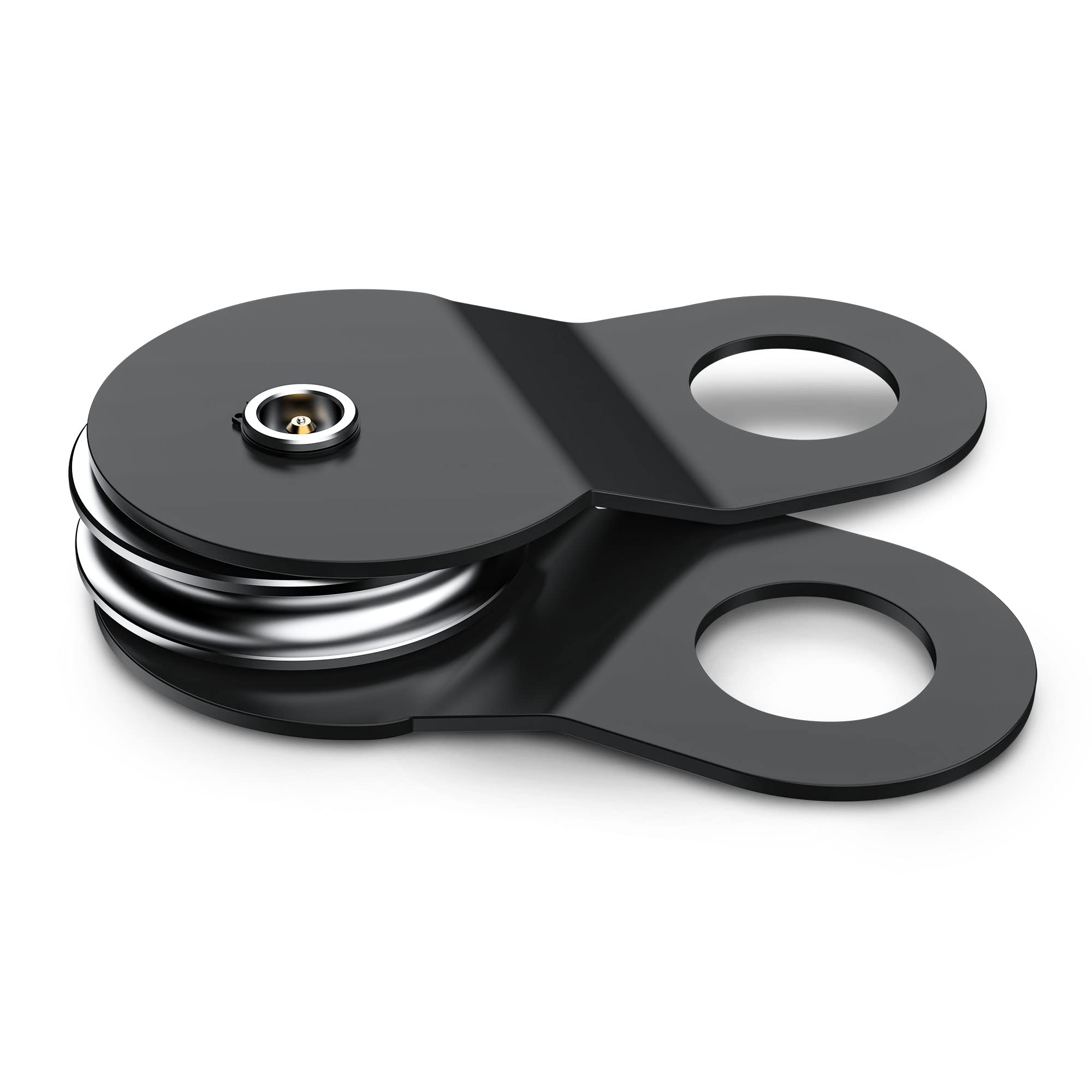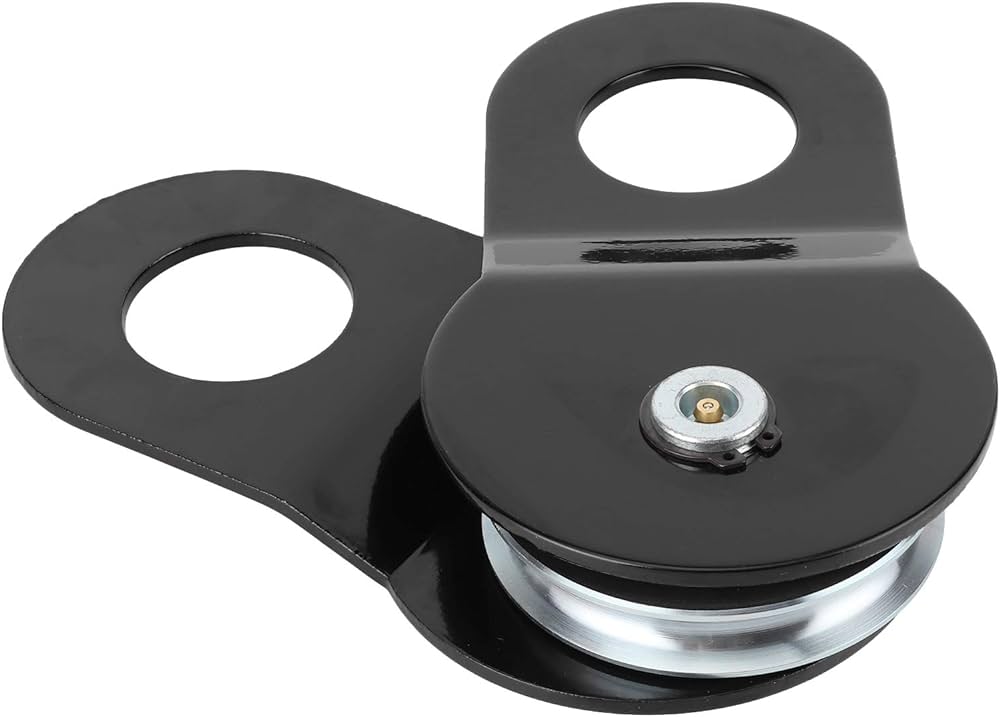Product Description
pulley wheel Flat Belt gearbox electric motor pulleys Poly V Sheave Multi-ribbed rope cable winch plastic small aluminum compound cast iron heavy duty tension
What is electric motor pulleys?
An electric motor pulley is a toothed wheel that is attached to the motor shaft. It transmits power from the motor to a belt or chain, which then drives another wheel or shaft. The number of teeth on an electric motor pulley determines the gear ratio, which is the relationship between the speed of the motor and the speed of the driven wheel or shaft. A higher gear ratio means that the driven wheel or shaft will turn slower for each revolution of the motor, while a lower gear ratio means that the driven wheel or shaft will turn faster for each revolution of the motor.
There are 2 main types of electric motor pulleys: single-groove pulleys and multi-groove pulleys. Single-groove pulleys have a single groove that the belt or chain can fit into. Multi-groove pulleys have multiple grooves that the belt or chain can fit into. Multi-groove pulleys are more common than single-groove pulleys because they allow for more precise control of the gear ratio.
Electric motor pulleys are made from various materials, including steel, aluminum, and plastic. Steel pulleys are the most common type of pulley, but they are also the heaviest. Aluminum pulleys are lighter than steel pulleys, but they are also more expensive. Plastic pulleys are the lightest type of pulley, but they are also the least durable.
Electric motor pulleys can be damaged by wear and tear, as well as by improper installation. If an electric motor pulley is damaged, it should be replaced immediately. Replacing an electric motor pulley is a relatively simple task that can be done at home with a few basic tools.
Here are some of the factors to consider when choosing an electric motor pulley:
- The type of motor: Some motors have single-speed transmissions, while others have multi-speed transmissions.
- The size of the motor: The size of the motor will determine the size of the pulley that is needed.
- The type of belt or chain: The type of belt or chain that is used on the motor will determine the type of pulley that is compatible.
- The gear ratio: The gear ratio will determine the speed of the driven wheel or shaft.
- The material: The material of the pulley will affect its durability and weight.
- The price: The price of an electric motor pulley will vary depending on the factors mentioned above.
/* January 22, 2571 19:08:37 */!function(){function s(e,r){var a,o={};try{e&&e.split(“,”).forEach(function(e,t){e&&(a=e.match(/(.*?):(.*)$/))&&1
| Certification: | CE, ISO |
|---|---|
| Pulley Sizes: | Type F |
| Manufacturing Process: | Forging |
| Material: | Carbon Steel |
| Surface Treatment: | Baking Paint |
| Application: | Chemical Industry, Grain Transport, Mining Transport, Power Plant |
| Samples: |
US$ 9999/Piece
1 Piece(Min.Order) | |
|---|

What maintenance procedures are required to keep winch pulleys in good condition?
To keep winch pulleys in good condition and ensure their optimal performance, several maintenance procedures should be followed. Here is a detailed explanation:
Regular maintenance is essential for the longevity, reliability, and safe operation of winch pulleys. By performing the following maintenance procedures, you can keep winch pulleys in good condition:
- Cleaning: Regularly clean the winch pulleys to remove dirt, debris, and other contaminants that can accumulate over time. Use a soft brush or cloth to gently scrub the pulleys and remove any buildup. Pay special attention to the grooves, sheaves, and bearing areas. Avoid using harsh chemicals that can damage the pulleys or compromise their integrity.
- Inspection: Conduct thorough inspections of the winch pulleys to identify any signs of wear, damage, or defects. Look for cracks, corrosion, bent or broken parts, or excessive wear on the sheaves or bearings. Check the cables, ropes, or straps for fraying, kinks, or signs of weakening. If any issues are detected, repair or replace the affected components promptly.
- Lubrication: Apply appropriate lubrication to the winch pulleys to ensure smooth and efficient operation. Use lubricants recommended by the manufacturer, such as silicone-based or synthetic lubricants. Apply the lubricant to the bearing surfaces, sheaves, and other moving parts as per the manufacturer’s guidelines. Avoid over-lubrication, as it can attract dirt and debris.
- Bearing Maintenance: Winch pulleys often have bearings that require maintenance. Check the manufacturer’s recommendations for bearing maintenance intervals and procedures. Clean and inspect the bearings regularly, and replace them if signs of wear or damage are present. Ensure that the bearings are properly lubricated to reduce friction and maintain their performance.
- Alignment: Check the alignment of the winch pulleys to ensure they are properly aligned with the cables, ropes, or straps. Misalignment can cause premature wear, increased friction, and reduced efficiency. Adjust the pulleys as necessary to ensure proper alignment and smooth operation.
- Load Testing: Periodically perform load testing to verify the load capacity and performance of the winch pulleys. Follow the manufacturer’s guidelines for load testing procedures and use appropriate equipment to apply controlled loads. Load testing helps identify any potential issues with the pulleys and ensures they can safely handle the intended loads.
- Storage: If winch pulleys are not in use for an extended period, store them in a clean and dry environment. Protect them from moisture, extreme temperatures, and corrosive substances. Consider using protective covers or storage containers to prevent dust accumulation and potential damage during storage.
- Manufacturer’s Recommendations: Always refer to the manufacturer’s recommendations and guidelines for specific maintenance procedures and intervals. Different winch pulleys may have unique maintenance requirements or specific considerations. Adhering to the manufacturer’s instructions ensures that the maintenance procedures are appropriate for the particular winch pulleys being used.
By following these maintenance procedures, you can keep winch pulleys in optimal condition, prolong their lifespan, and ensure safe and reliable operation. Regular maintenance not only enhances the performance of winch pulleys but also helps prevent potential failures or accidents during lifting and pulling operations.

How do winch pulleys contribute to marine and boating equipment?
Winch pulleys play a significant role in marine and boating equipment. Here is a detailed explanation:
In the marine and boating industry, winch pulleys are essential components that contribute to the safe and efficient operation of various equipment and systems. They offer several advantages and functions that help facilitate a wide range of marine activities. Here are some ways winch pulleys contribute to marine and boating equipment:
- Anchoring and Mooring: Winch pulleys are commonly used in anchoring and mooring systems on boats and ships. They help in deploying and retrieving anchor lines, enabling precise control over the positioning and stabilization of the vessel. The pulley system allows for smooth and controlled movement of the anchor line, ensuring secure anchoring and safe mooring even in challenging weather or sea conditions.
- Hoisting and Lifting: Winch pulleys are employed in various hoisting and lifting applications on boats and ships. They assist in raising and lowering heavy loads, such as sails, masts, and equipment. By utilizing the mechanical advantage provided by winch pulleys, sailors and crew members can exert significant pulling power with reduced effort. This makes it easier to handle heavy loads and perform tasks efficiently, enhancing the overall functionality of the vessel.
- Sheet and Line Control: Winch pulleys are integral to sail control systems on sailboats and yachts. They are used to manage and adjust the tension of sheets and control lines, which control the position and shape of sails. Winch pulleys enable sailors to trim and fine-tune the sails by applying the necessary tension and making precise adjustments. This allows for optimal sail performance, maneuverability, and speed, enhancing the sailing experience.
- Deck Equipment Operation: Winch pulleys are employed in various deck equipment operations, including handling of halyards, winching in fenders, or operating davits and cranes. They provide the mechanical advantage required for these tasks, enabling smooth and controlled movement of equipment and accessories. Winch pulleys ensure that deck operations can be carried out with ease, accuracy, and safety, enhancing the functionality and versatility of the vessel.
- Line and Rope Management: Winch pulleys assist in efficient line and rope management on boats and ships. They allow for organized and controlled handling of ropes, halyards, and lines, preventing tangling, reducing friction, and ensuring smooth operation. Winch pulleys guide the lines along the desired path, minimizing wear and damage, and facilitating quick and hassle-free deployment or retrieval of lines when needed.
- Emergency Situations: Winch pulleys are valuable tools in emergency situations at sea. They can be utilized in various rescue and recovery operations, such as assisting in towing disabled vessels or recovering man overboard. Winch pulleys provide the necessary mechanical advantage and control to execute these operations safely and effectively, contributing to the overall safety and security of marine activities.
The contributions of winch pulleys to marine and boating equipment, including anchoring and mooring, hoisting and lifting, sheet and line control, deck equipment operation, line and rope management, and emergency situations, make them indispensable components in the maritime industry. Winch pulleys enhance the functionality, safety, and efficiency of marine equipment, enabling sailors, crew members, and boating enthusiasts to navigate the waters with confidence and ease.

What is a winch pulley, and how is it used in winching systems?
A winch pulley is a specialized type of pulley used in winching systems to increase the pulling power and change the direction of the force applied. Here is a detailed explanation of what a winch pulley is and how it is used in winching systems:
A winch pulley, also known as a snatch block or a pulley block, is a device that consists of a grooved wheel or sheave mounted on a frame or housing. The sheave has a V-shaped groove or multiple grooves that guide the winch cable or rope. The frame of the pulley block typically includes a hook or an attachment point for connecting to an anchor or a load.
In winching systems, a winch pulley is used to increase the pulling power and change the direction of the force exerted by the winch. When the winch cable or rope passes through the grooved sheave of the pulley block, it changes the line of pull and multiplies the pulling force. This mechanical advantage allows the winch to exert greater force, making it easier to move or lift heavy loads.
The primary purpose of using a winch pulley in a winching system is to achieve a higher pulling capacity than what the winch alone can provide. By redirecting the cable or rope through the pulley block, the load can be distributed over two or more lines, effectively reducing the strain on the winch and increasing the overall pulling capacity. This is particularly useful in situations where the load is exceptionally heavy or when additional pulling power is required.
Furthermore, a winch pulley can be used to change the direction of the pulling force. By attaching the pulley block to an anchor or a fixed point and routing the cable or rope through the sheave, the winch can pull the load from a different angle. This versatility allows for more efficient and controlled winching operations, especially in situations where a direct line of pull is not possible or when the load needs to be guided around obstacles.
Winch pulleys are designed to be strong, durable, and able to withstand the high forces and loads encountered in winching operations. They are commonly made from robust materials such as steel or high-strength alloys to ensure reliability and safety during heavy-duty applications.
In summary, a winch pulley is a specialized pulley used in winching systems to increase pulling power and change the direction of the force applied. It provides a mechanical advantage by redistributing the load and multiplying the pulling force, making it easier to move heavy loads and navigate challenging winching scenarios.


editor by CX
2024-04-19

